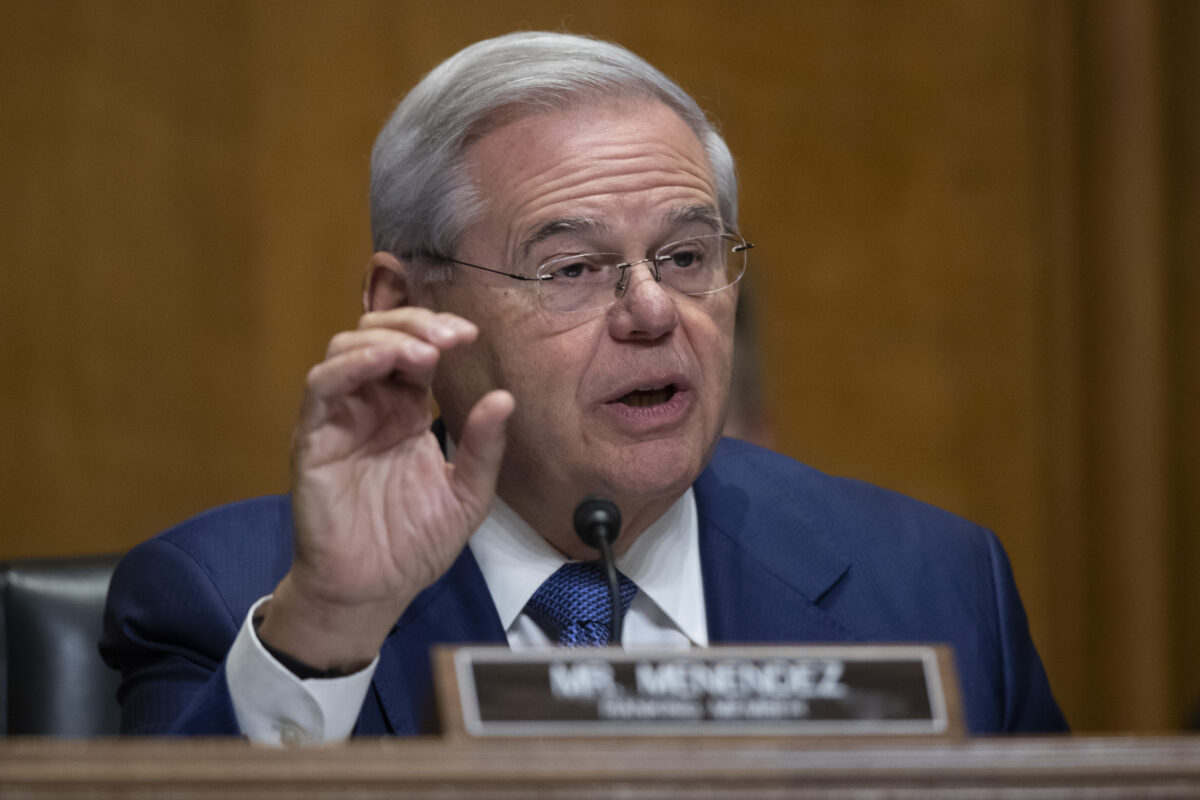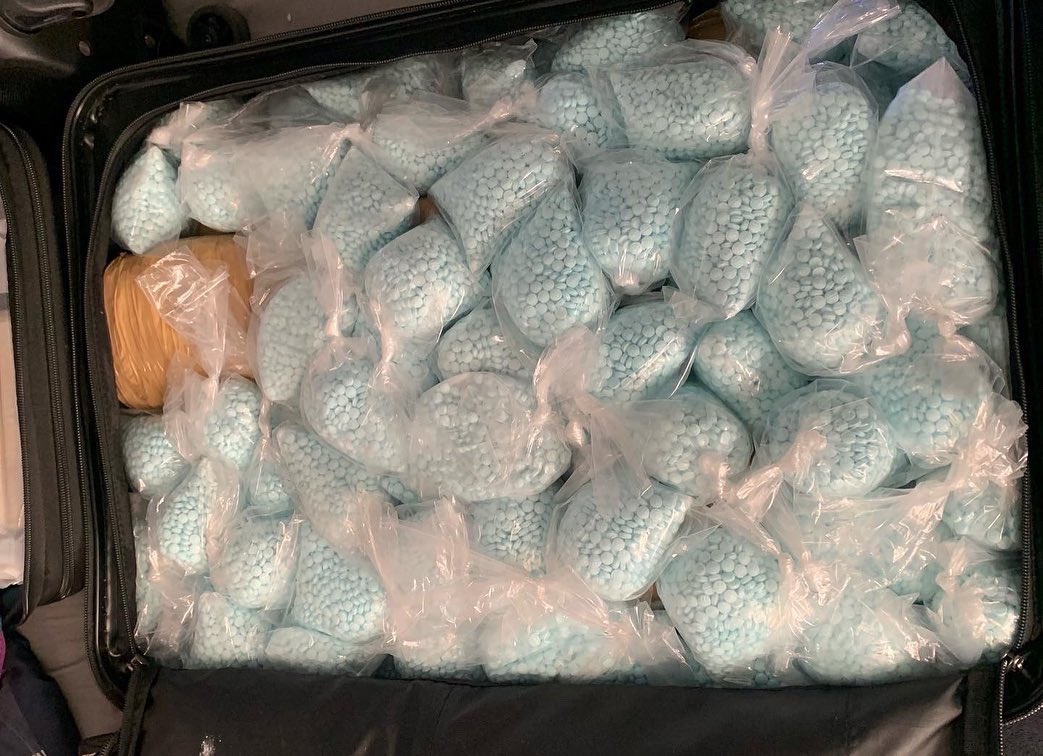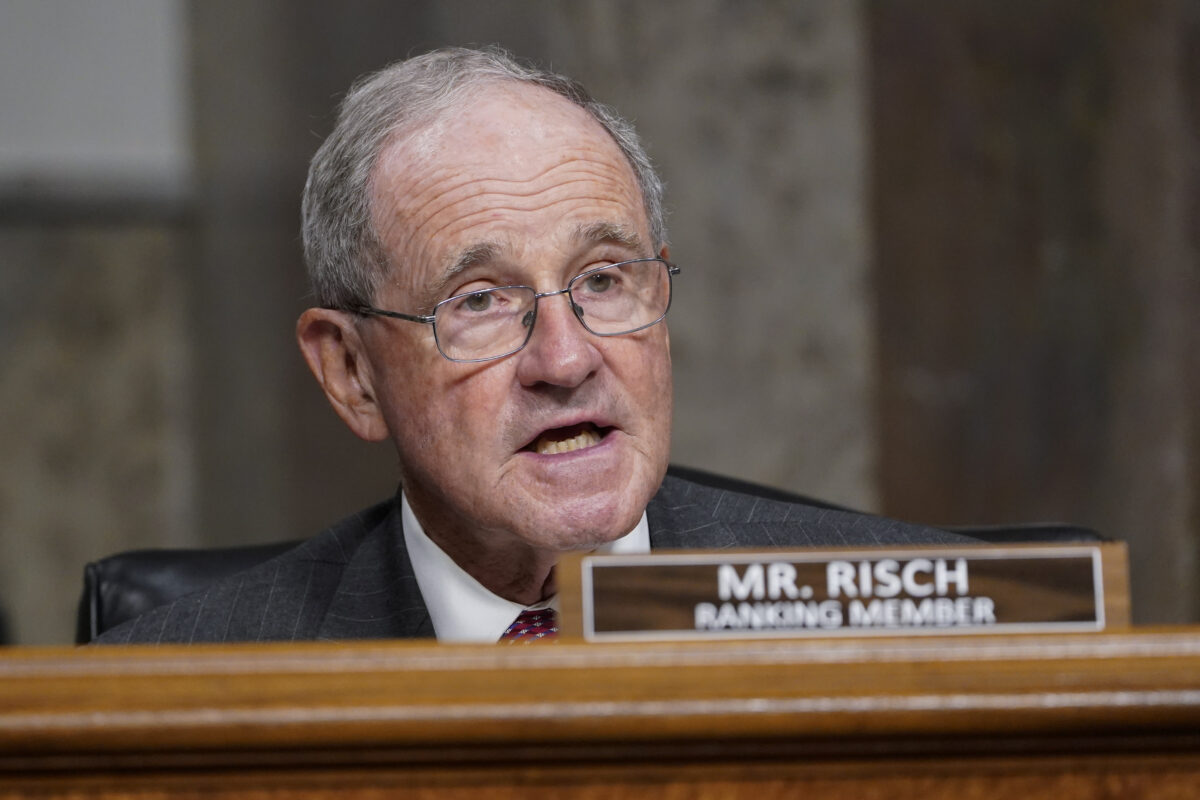


The Senate Foreign Relations Committee on Feb. 15 heard from law enforcement officials about the trafficking of fentanyl—an opioid-class substance that is extremely lethal—into the United States via the southern border.
In his opening remarks to the panel, National Drug Control Policy Director Dr. Rahul Gupta noted that a whopping 46 million Americans struggle with substance abuse. One of the most dangerous drugs is fentanyl.
The National Institute on Drug Abuse reports that 70,601 people died due to a fentanyl overdose in 2021.
“This crisis does more than cause tragic and preventable deaths—it is tearing the fabric of our nation,” Gupta said.
The problem, he added, “cuts across every geographic, demographic, [and] economic boundary.”
Drug Enforcement Administration (DEA) head Anne Milgram also emphasized the scope of the problem on the domestic side in her testimony.
“We are now seizing fentanyl in all fifty states and it is the deadliest drug threat our country has ever faced,” Milgram told the panel.
Throughout the hearing, officials painted a portrait of an international problem.
While the issue has been a major problem in the heartland United States, Chairman Bob Menendez (D-N.J.) said that solutions must look beyond the home front.
“The Senate Foreign Relations Committee is holding this hearing because this is an issue we cannot solve just within our borders,” Menendez explained.
In her opening remarks to the panel, Milgram explained that Mexican drug cartels are responsible for most fentanyl that comes into the country.
“Between August of 2021 and August of 2022 107,735 American lives were lost to drug poisoning,” Milgram began.
“Perhaps the most important thing I can tell the committee today—we know who’s responsible: the Sinaloa Cartel and the Jalisco (CJNG) Cartel, both cartels in Mexico, are responsible for the vast majority of fentanyl that is coming into the U.S.,” Milgram said. “It is why DEA has made defeating those two cartels our top operational priority.”
These cartels “dominate the global fentanyl supply chain,” Milgram continued.
Though the Mexican government has reportedly increased its crackdown on cartels and reduced internal corruption, cartel activity remains a pressing issue for Mexico. By extension, cartel activity is a threat to American lives as well.
Milgram also said most illicit drugs come in through airports or land ports along the southern border, and called for enhanced security and screening measures at guarded points of entry along the border.
“Fentanyl is so addictive the cartel is using it to drive addiction,” she said.
While most of the fentanyl in the United States is produced in Mexico, many precursors for the drug come from China.
“They start in China where they are purchasing the precursor chemicals to make fentanyl,” Milgram explained. “They then take those chemicals into Mexico, where they are mass producing fentanyl.”
Even more concerning, cartels have been known to replicate real prescription drugs like Xanax, Adderall, and others. However, the only drug these look-alikes contain is fentanyl.
After producing fentanyl powder, Milgram said, cartels “are pressing a great deal of that powder into fake prescription pills in Mexico.”
“Those pills look identical to real American and international medicines—things like Oxycontin, Percocet, Adderall, or Xanax. But they have no real medicine in them; they are fentanyl and filler.
“The cartels then move the pills and the powder into the United States,” Milgram said.
To get money from the drug sales back into Mexico, cartels are often aided by Chinese money launderers, Milgram said.
The United States has also had problems with getting Mexico to cooperate, Menendez noted.
“Mexico’s [increasingly] political National Prosecutors Office has shown little appetite to prosecute fentanyl-related cases,” Menendez said.
“Collusion between cartels and Mexican officials is a recurring challenge,” Menendez continued.
“Mexican authorities seem unwilling to acknowledge that the vast amount of fentanyl entering the United States is manufactured in clandestine labs in Mexico,” he said.
Additionally, Milgram told the panel that 232 criminals are currently awaiting extradition on drug-related charges, though Mexico has been somewhat cooperative in handing these criminals over.
Republicans were critical of the Biden administration’s handling of China, which plays a crucial role in the fentanyl supply chain.
Referencing Biden’s Nov. 14 meeting with Chinese leader Xi Jinping, Ranking Member Jim Risch (R-Idaho) said, “What struck is that there is not one mention in here of the fentanyl problem that we’ve got with China.”
Risch asked Assistant Secretary of State Todd Robinson if Biden had discussed the issue at all with Xi.
“I don’t know if they were able to get to it during their conversation,” Robinson said.
“I do know that … the relationship between China and the U.S. is complex,” he continued. “There are a lot of issues on the table, but there is no doubt that this administration and [Secretary of State Antony Blinken] are keenly aware of this issue.”
Later, Robinson acknowledged that the State Department had had “limited engagement with China on this issue.”
Robinson expressed optimism that China could be brought to reason. He cited China’s 2019 move to schedule fentanyl as an illicit substance, which he said significantly reduced the inflow of fentanyl from China to the United States.
Pressed further by Risch, Robinson acknowledged, “There are basic steps [China] could be taking that they’re not taking right now that could help a lot.”
Robinson called for China to make more transparent the labels of chemicals leaving the country and to exchange more information with the United States.
“They’re not doing that now, they’re not really talking to us about it,” Robinson admitted, adding, “They should.”
One means of fentanyl distribution touched on during the hearing was tech platforms.
Drug pushers often use platforms like Snapchat to market drugs and plan meetings with prospective buyers.
During her opening remarks, Milgram said that social media had become a prime means for distributing drugs.
In his opening statement, Gupta said that tech platforms would be a key part of the administration’s push against fentanyl.
“If it remains easy to get illicit drugs in America … we will never end this crisis,” Gupta said. “That is why in the State of the Union President Biden launched a major search (sic) to stop illicit fentanyl production, trafficking, and distribution at every chokepoint, including holding accountable the Big Tech companies that allow the sale of illegal drugs on their platforms.”
Later in the hearing, Sen. Jeanne Shaheen (D-N.H.) also touched on the Big Tech front of the issue.
“Snapchat, TikTok, and Instagram, they’re all being used to market and sell pills laced with fentanyl,” Shaheen said. “I think we’ve got to do more to force social media companies to be responsible.”
Throughout the hearing, Milgram and others called on lawmakers to do more to regulate the sale of drugs on tech platforms, and to pass legislation to tackle the fentanyl crisis.
The fentanyl issue is one that crosses party lines. Still, any congressional action on the matter will require a deal between Democrats in the Senate, Republicans in the House, and Biden.
As Mexico and China remain less than cooperative with the United States, American lawmakers have limited options to address the crisis.



